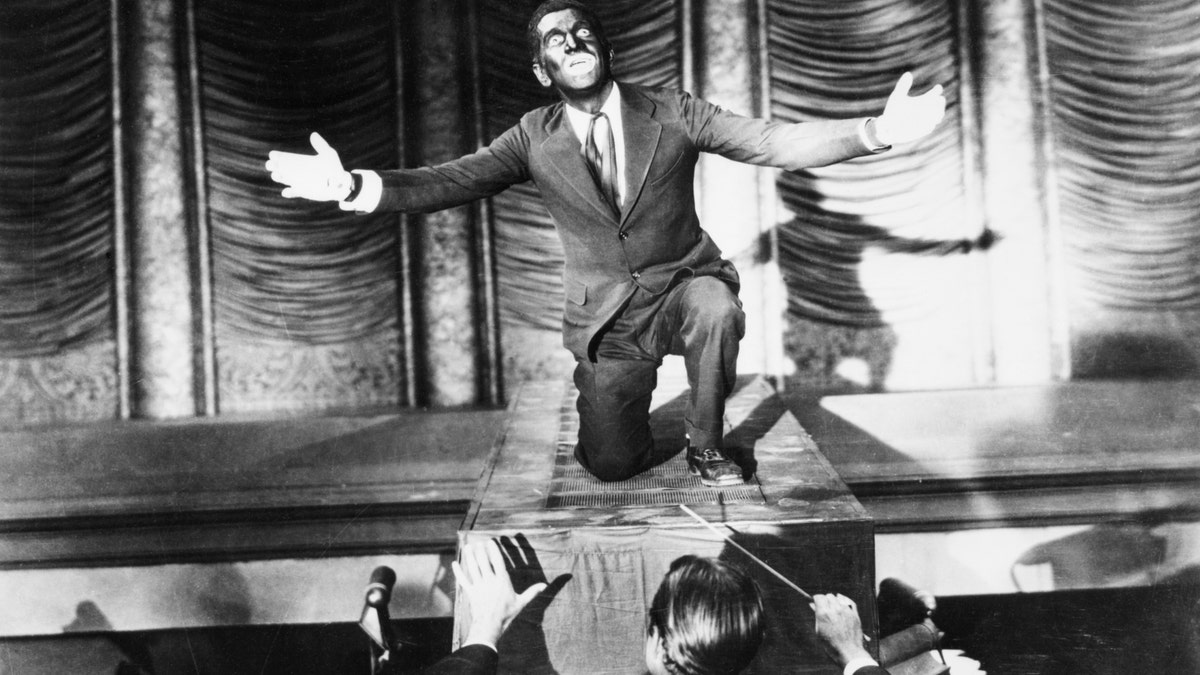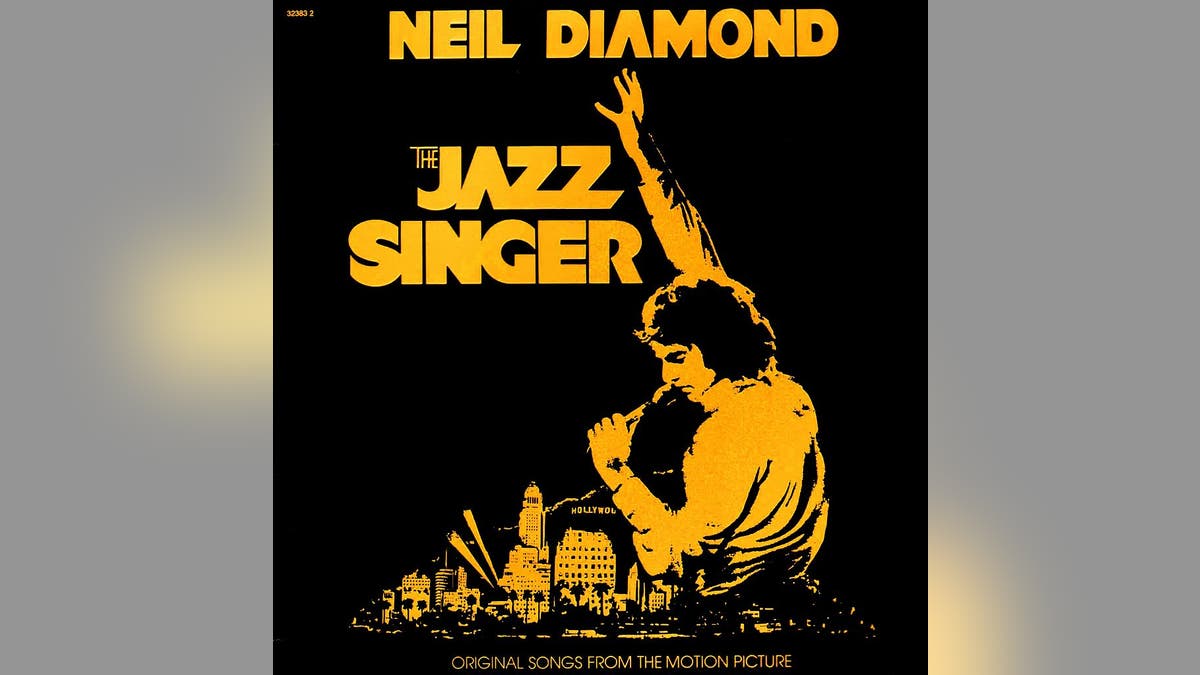
“The Jazz Singer” starring Al Jolson, the first movie that incorporated synchronized speaking parts for its actors, was released on this day in history, Oct. 6, 1927.
Primitive by today’s standards, the movie revolutionized cinema in the United States and beyond and is recognized as a landmark achievement in pop culture history.
“Wait a minute, wait a minute, you ain’t heard nothing yet,” said Jolson, portraying Jakie Rabinowitz, in the first words uttered in cinematic history.
ON THIS DAY IN HISTORY, OCTOBER 5, 1813, WILLIAM HENRY HARRISON ROUTS BRITS, TECUMSEH IN BATTLE OF THE THAMES
“When [Jolson] spoke those words on the silver screen of Warner Bros’ flagship theater in New York’s Times Square, the audience became hysterical,” the National Museum of American History notes.
“The truth is, they hadn’t heard anything yet, at least not in the movies, and certainly not with Vitaphone synchronized dialogue and song sequences.”
Scene from the movie “The Jazz Singer,” with Jolson as Jakie Rabinowitz (r.), Eugenie Besserer as Sara Rabinowitz and Warner Oland as cantor Rabinowitz. Directed by Alan Crosland and produced by Warner Bros. Pictures. Vintage property of ullstein bild. (Abraham Pisarek/ullstein bild via Getty Images)
Jolson plays the scion of a devout Jewish family who dreams of performing pop tunes outside the local synagogue, where his father is the cantor.
The soundtrack — before the term existed or at least was widely known — featured classic tunes such as “Toot, Toot, Tootsie (Goo’ Bye),” a hit for Jolson in 1922.
JAMES BOND DAY: BOND GIRLS URSULA ANDRESS AND LANA WOOD REMINISCE ABOUT WORKING WITH SEAN CONNERY
“The Jazz Singer” was based on the 1925 Broadway production of the same name.
It spawned several remakes, including a 1952 movie starring Danny Thomas, a 1959 TV production with Jerry Lee Lewis and a 1980 flick featuring Neil Diamond.
“When (Jolson) spoke … the audience became hysterical.” – National Museum of American History
“Though hardly a cinematic masterpiece — or even a good film, for that matter — the 1927 version of ‘The Jazz Singer’ remains one of the most important motion pictures ever made,” writes the Alt Film Guide.

A huge crowd waits outside Warners’ Theatre to see Al Jolson in “The Jazz Singer” (1927). (Getty Images)
“This part-musical, part-silent, all-mush melodrama marked the first time in a feature film that synchronized sound and voices could be heard in musical numbers and talking segments.”
ON THIS DAY IN HISTORY, OCTOBER 4, 1927, MOUNT RUSHMORE’S MOMENT OF CREATION BEGINS IN SOUTH DAKOTA
The movie has enjoyed multi-generational acclaim. But it’s also generated condemnation from modern critics, namely for Jolson’s widespread use of blackface.

Al Jolson, in blackface, as Jakie Rabinowitz, in “The Jazz Singer,” the first “talking” motion picture. (AS400 DB/Bettmann Archive)
Rabinowitz, his budding pop performer, leaves home after shaming his devout family, and performs in the makeup as jazz singer Jake Robin.
CLICK HERE TO GET THE FOX NEWS APP
“Jolson spends a significant portion of ‘Jazz Singer’ in blackface, masquerading as an African American man — that is, as a grotesque, degrading approximation of one,” said Entertainment Weekly in a 2007 retrospective.
Still, “The Jazz Singer” enjoys a unique place in American art history.

“The Jazz Singer” is an album by Neil Diamond that was released in 1980. It was the soundtrack for the 1980 remake of the film by the same name. While the film bombed, the album sold over 5 million copies and was Diamond’s biggest ever selling album in the United States. (Universal History Archive/UIG via Getty images)
The National Film Registry includes it among its collection of “culturally, historically or aesthetically significant” motion pictures.
For more Lifestyle articles, visit www.foxnews.com/lifestyle
Warner Bros. received an honorary Oscar for “The Jazz Singer” at the first Academy Awards in 1929. The Academy recognized the film as “the pioneer outstanding talking picture, which has revolutionized the industry.”
CLICK HERE TO SIGN UP FOR OUR LIFESTYLE NEWSLETTER
The American Film Institute places “The Jazz Singer” at no. 90 on its list of the 100 greatest American movies of all time, while its opening words — “You ain’t heard nothing yet” — rank no. 71 among AFI’s top lines in cinema history.





